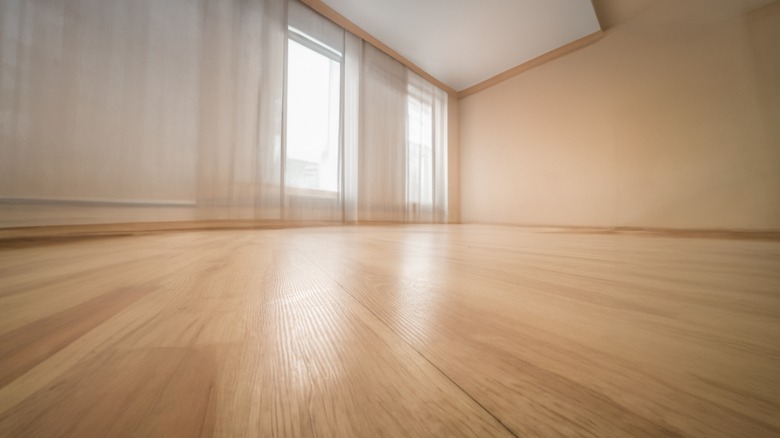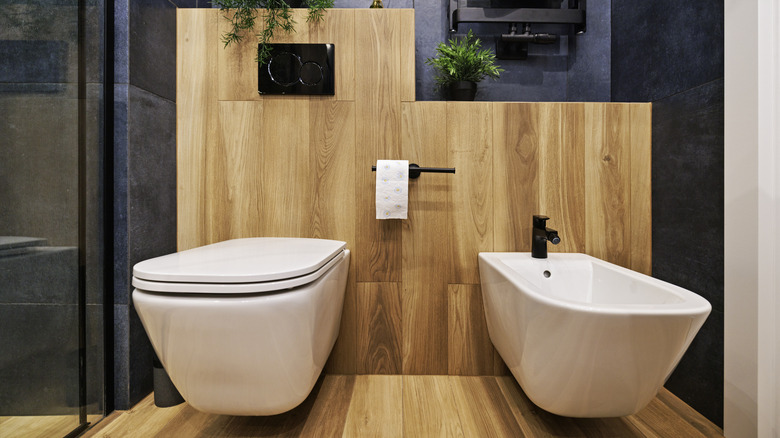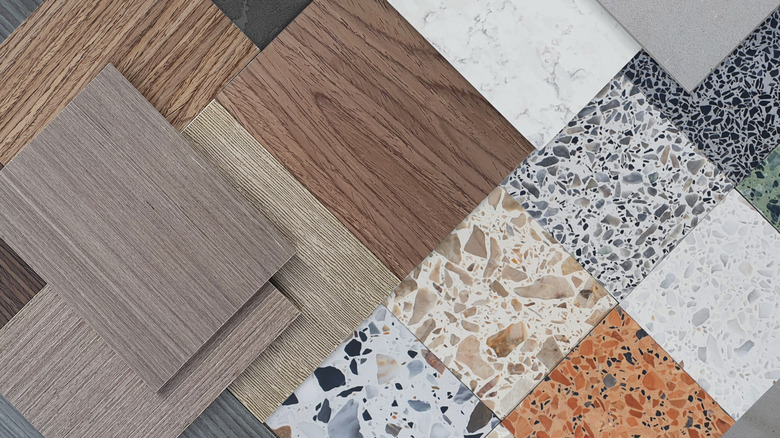The Low-Maintenance Hardwood Floor Look-Alike That Pinterest Is Loving
No doubt that most of us would love to have hardwood flooring in our homes. It's classic, timeless, and can work with so many different aesthetics. But hardwood doesn't come cheap, and even if you have it, it can be a nightmare to maintain year after year. Because of these harsh realities, it might make more sense to go for a different floor type, but that doesn't mean you can't have the look of wood floors. You may already be familiar with wood floor alternatives, such as laminates and engineered wood flooring, but there is one option that could be the perfect solution you haven't heard of yet that Pinterest loves: wood effect tiles (via Pinterest).
These tiles start out the same way as most tiles — they're typically created with a porcelain or ceramic base, and then the tile shape is molded and cut. Unlike some standard tiles, wood-look tiles are usually cut to look like planks rather than squares to further the illusion. Then, the pattern and color of the wood grain are printed onto the tiles to give it that wood-like appearance. Some tiles even have an etched texture to better mimic the appearance of wood. That means you can have the stunning look of wood floors, and the convenience of tiles in your home.
The benefits of porcelain wood tiles
Ceramic and porcelain tiles are fairly cheap to manufacture, ship, and install, which means they are generally much more affordable than natural wood floors. But cost isn't the only thing wood-look tiles have going for them. Because they're made of a porous, supple material, wood floors can easily become warped, scratched, and damaged over time. That means they must be regularly cleaned, buffed, and resealed, and you need to use caution when moving sharp or heavy furniture around. Porcelain or ceramic tiles are very durable and have low porosity, which means they resist water and physical damage better than wood.
They can also be installed in humid bathrooms without warping. Spilled liquids and food can be wiped up in a flash with a low chance of staining, making cleaning a breeze. Ceramic tiles are also more eco-friendly, as wood floors are, of course, made from trees, which means more trees need to be cut down for raw material. You can buy reclaimed wood floors, but these run even more expensive than new wood. Ceramic and porcelain are made from basic, abundant, and all-natural materials that have far less environmental impact than wood.
The downsides of ceramic wood-look tiles
There are still some important factors to keep in mind if you opt for tiles over wooden flooring. On the one hand, the hardness of the tiles can be seen as a benefit, but there's a drawback to this as well. If you drop glassware or pottery on the tile it will almost certainly shatter upon impact, unlike other floor types. Tiles also tend to stay very cold as they don't hold heat as natural wood does, which can be rather uncomfortable, especially if you live in a cold climate.
And while it's hard to see the difference between wood-look tiles and the real thing at first, there's one thing that can be a dead giveaway: the dreaded grout lines. Just like any other tile, wood look-alike tiles are installed with grout, so it's important to choose a grout color that blends in with your flooring. Also keep in mind that keeping grout looking clean can be difficult even if you regularly sweep and mop. To minimize this issue, you'll want to seal the grout lines with a specialty product and may need to reseal them as they wear down over time. Finally, some people turn their noses up at faux wood alternatives as they seem inauthentic or cheap. The key to avoiding this is investing in a high-quality design that really mimics the patterns and texture of wood, which means you probably won't want to use the least expensive option you come across.



